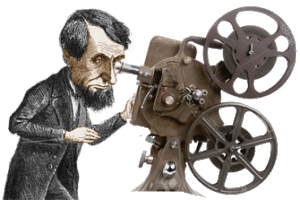 Technically, Lincoln didn’t attend the exhibition, but on this date, October 14, 1861, a committee of commissioners for the industrial exhibition in England visits President Lincoln in the White House and asks use of a government vessel to transport American contributions to the fair. Lincoln had supported United States participation.
Technically, Lincoln didn’t attend the exhibition, but on this date, October 14, 1861, a committee of commissioners for the industrial exhibition in England visits President Lincoln in the White House and asks use of a government vessel to transport American contributions to the fair. Lincoln had supported United States participation.
Eying an opportunity to showcase American science, Lincoln appointed Smithsonian Secretary Joseph Henry (an informal science adviser to the President) to yet another Commission, this one organizing American participation in the International Exhibition scheduled for London in 1862. Lincoln approved the Commission’s recommendations in December 1861 and the House Ways and Means Committee endorsed an appropriation of $35,000 for expenses.
Lincoln had always had an eye for scientific and technological advancement, which had been rapid leading up to his nomination. The canal system had opened up the Midwest and railroads were stringing themselves in all directions, creating towns and economies as they spread. Steamships were regular features on the Great Lakes and the great rivers like the Ohio and Mississippi. American reaping machines amazed visitors to the Paris World’s Fair in 1855 with their ability to cut an acre of grain in a third of the time of European models. By 1860, the United States had become the fourth largest manufacturing country in the world. George Perkins Marsh, perhaps America’s first environmentalist, approved of industrialization but also warned of the dangers of deforestation. Marsh began writing his now classic treatise, Man and Nature, as Lincoln accepted the nomination; once President, Lincoln appointed Marsh minister to Italy. Long-standing Whig principles would become part of Lincoln’s presidential platform.
Yet neither the full House nor Senate could pass a bill and the lack of political and financial support discouraged many companies from participating. The lost opportunity probably hackled Lincoln as the Exhibition showcased such industrial advances as the electrical telegraph, submarine cables, and a new thermoplastic called Parkesine, later renamed Celluloid, which became the basis of Thomas Edison’s motion picture film.
Lincoln quickly moved on to other more pressing matters as the Civil War settled into what would be four years of constant turmoil. But the only president with a patent never gave up on his vision of empowering science and technology in the federal government.
[The above is adapted from my forthcoming book due out in 2022]
David J. Kent is an avid science traveler and the author of Lincoln: The Man Who Saved America, in Barnes and Noble stores now. His previous books include Tesla: The Wizard of Electricity and Edison: The Inventor of the Modern World and two specialty e-books: Nikola Tesla: Renewable Energy Ahead of Its Time and Abraham Lincoln and Nikola Tesla: Connected by Fate.
Check out my Goodreads author page. While you’re at it, “Like” my Facebook author page for more updates!










